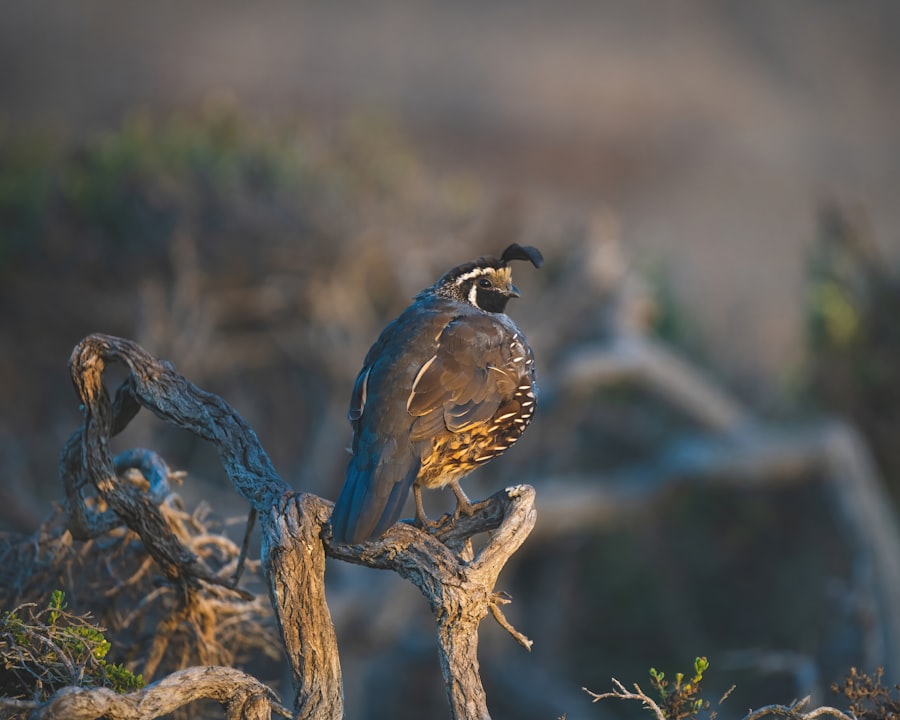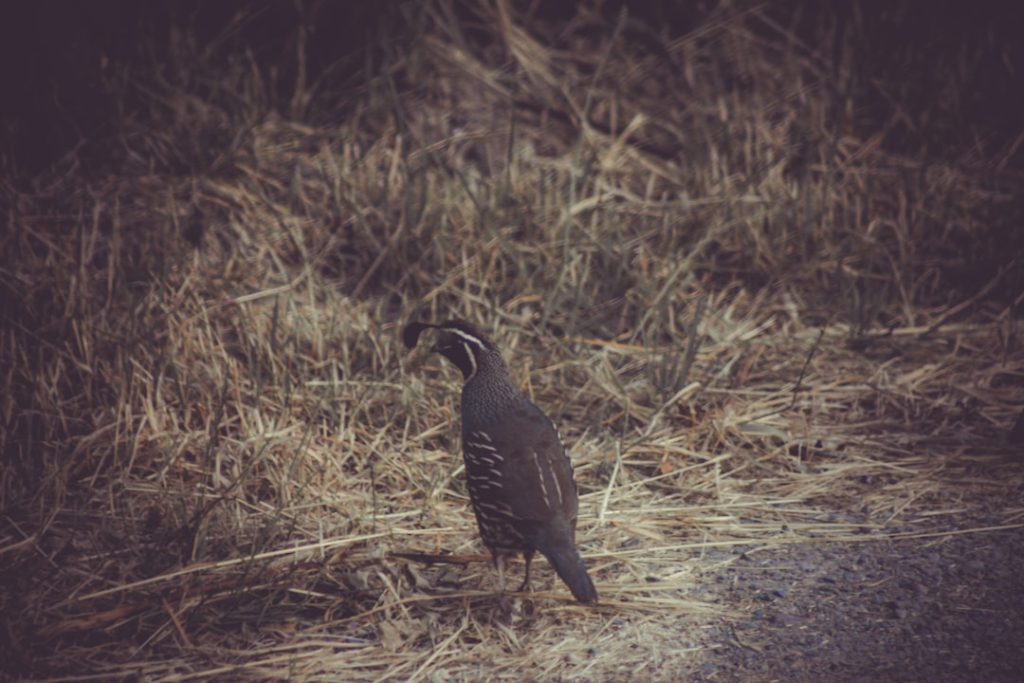Quails are small, ground-dwelling birds that belong to the family Phasianidae. They are known for their plump bodies, short tails, and distinctive calls. While quails are commonly found in the wild, there are also rare breeds of quail that are prized for their unique characteristics and traits. These rare quail breeds are often sought after by breeders and enthusiasts for their ornamental value, as well as for their potential in agriculture and conservation efforts.
Rare quail breeds come in a variety of colors, patterns, and sizes, making them a fascinating subject for bird enthusiasts and breeders alike. From the elegant Coturnix quail to the strikingly beautiful Blue Scale quail, each rare breed has its own distinct features that set it apart from the more common quail varieties. In this article, we will explore the characteristics and physical traits of rare quail breeds, as well as their history, conservation efforts, and the importance of preserving these unique birds.
Table of Contents
- 1 Characteristics and Physical Traits of Rare Quail Breeds
- 2 History and Origins of Rare Quail Breeds
- 3 Conservation Efforts for Rare Quail Breeds
- 4 Importance of Rare Quail Breeds in Agriculture and Biodiversity
- 5 Challenges and Threats Faced by Rare Quail Breeds
- 6 How to Support and Promote Rare Quail Breeds
- 7 FAQs
Key Takeaways
- Rare quail breeds are a valuable and often overlooked part of agricultural biodiversity.
- Conservation efforts are crucial for preserving rare quail breeds and their genetic diversity.
- Rare quail breeds have unique physical traits and characteristics that make them valuable for breeding and research purposes.
- Understanding the history and origins of rare quail breeds can provide insight into their genetic makeup and potential for adaptation.
- Supporting and promoting rare quail breeds through education, breeding programs, and sustainable farming practices can help ensure their survival for future generations.
Characteristics and Physical Traits of Rare Quail Breeds
Rare quail breeds are known for their diverse range of physical traits and characteristics that make them stand out from their more common counterparts. One of the most striking features of rare quail breeds is their unique coloration and plumage. For example, the Blue Scale quail is known for its striking blue and white feathers, while the Tibetan quail boasts a beautiful combination of brown, black, and white plumage. These distinct color patterns make rare quail breeds highly sought after for their ornamental value, and they are often kept as pets or for exhibition purposes.
In addition to their striking coloration, rare quail breeds also exhibit a wide range of physical traits that make them unique. Some rare quail breeds, such as the King quail, are known for their diminutive size, making them a popular choice for those with limited space for keeping birds. Other rare quail breeds, such as the Snowflake quail, have distinctive feather patterns that set them apart from other quail varieties. These physical traits make rare quail breeds not only visually appealing but also valuable for their genetic diversity and potential contributions to breeding programs.
History and Origins of Rare Quail Breeds
The history and origins of rare quail breeds can be traced back to various regions around the world, where these unique birds have been bred and domesticated for centuries. One of the most well-known rare quail breeds is the Coturnix quail, which has a long history of domestication in Asia and Europe. The Coturnix quail is prized for its small size, rapid growth rate, and high egg production, making it a valuable bird for both meat and egg production.
Another rare quail breed with a rich history is the Bobwhite quail, which is native to North America and has been bred for its game bird qualities. The Bobwhite quail has been a popular choice for hunting and sport shooting, and efforts have been made to conserve and protect this iconic bird species. Additionally, rare quail breeds such as the Blue Scale quail and Tibetan quail have origins in Asia and have been bred for their ornamental value and unique coloration.
Conservation Efforts for Rare Quail Breeds
Conservation efforts for rare quail breeds are crucial for preserving the genetic diversity and unique traits of these birds. Many rare quail breeds face threats such as habitat loss, predation, and competition from invasive species, which puts them at risk of declining populations and potential extinction. To address these challenges, conservation organizations and breeders have implemented various strategies to protect and promote rare quail breeds.
One important conservation effort for rare quail breeds is the establishment of captive breeding programs. These programs aim to maintain healthy populations of rare quail breeds in captivity, which can serve as a safeguard against population declines in the wild. By carefully managing breeding pairs and genetic diversity, captive breeding programs can help ensure the long-term survival of rare quail breeds.
Another key conservation strategy for rare quail breeds is habitat restoration and protection. Many rare quail species rely on specific habitats for nesting, feeding, and shelter, and efforts to conserve these habitats are essential for their survival. Conservation organizations work to protect and restore natural habitats for rare quail breeds, which can help mitigate the impacts of habitat loss and fragmentation.
Importance of Rare Quail Breeds in Agriculture and Biodiversity
Rare quail breeds play a significant role in agriculture and biodiversity due to their unique traits and genetic diversity. In agriculture, rare quail breeds are valued for their potential contributions to meat and egg production. For example, the Coturnix quail is known for its high egg production and rapid growth rate, making it a valuable bird for small-scale poultry farming. Additionally, rare quail breeds with ornamental value, such as the Blue Scale quail and Tibetan quail, are sought after by breeders and enthusiasts for their aesthetic appeal.
In terms of biodiversity, rare quail breeds contribute to the genetic diversity of the overall quail population. Genetic diversity is essential for the long-term survival of species, as it provides resilience against environmental changes and disease outbreaks. By preserving rare quail breeds and their unique genetic traits, conservation efforts can help maintain healthy populations of quails in the wild and in captivity.
Challenges and Threats Faced by Rare Quail Breeds

Despite their cultural significance and ecological importance, rare quail breeds face numerous challenges and threats that put them at risk of declining populations and potential extinction. One of the primary threats to rare quail breeds is habitat loss and degradation due to human activities such as urbanization, agriculture expansion, and deforestation. As natural habitats disappear, rare quail species lose critical resources for nesting, feeding, and shelter, which can lead to population declines.
In addition to habitat loss, rare quail breeds also face threats from predation and competition from invasive species. Predators such as foxes, raccoons, and feral cats can significantly impact quail populations by preying on eggs, chicks, and adult birds. Similarly, invasive species such as rats and snakes can outcompete native quails for food and resources, further exacerbating population declines.
Climate change is another significant challenge facing rare quail breeds, as it can alter the availability of suitable habitats and food sources. Changes in temperature and precipitation patterns can impact breeding success and survival rates for quails, leading to population declines in affected areas.
How to Support and Promote Rare Quail Breeds
There are several ways that individuals can support and promote rare quail breeds to help ensure their long-term survival. One important way to support rare quail breeds is by raising awareness about their conservation status and the threats they face. By educating others about the importance of preserving rare quails and their habitats, individuals can help garner support for conservation efforts and encourage action to protect these unique birds.
Another way to support rare quail breeds is by participating in conservation programs and initiatives. Many organizations work to conserve rare quails through captive breeding programs, habitat restoration projects, and research efforts. By volunteering time or resources to these programs, individuals can directly contribute to the conservation of rare quails and help make a positive impact on their populations.
Furthermore, supporting sustainable land management practices can benefit rare quails by preserving their natural habitats and ensuring access to essential resources. By promoting sustainable agriculture, forestry, and urban development practices that minimize habitat destruction and fragmentation, individuals can help create a more hospitable environment for rare quails to thrive.
In conclusion, rare quail breeds are valuable birds with unique characteristics that make them important for agriculture, biodiversity, and cultural heritage. By understanding the challenges they face and taking action to support their conservation, individuals can help ensure that these fascinating birds continue to enrich our world for generations to come.
If you’re interested in learning more about rare breeds of quail, you might also want to check out this informative article on the benefits of renting a chicken coop. Renting a coop can be a great way to explore different poultry options and discover unique breeds, such as quail, while also enjoying the convenience and support of a well-maintained coop. To find out more about this option, visit Poultry Wizard’s article on renting a chicken coop.
FAQs
What are rare breeds of quail?
Rare breeds of quail are specific varieties of quail that are not commonly found or are less common compared to more popular breeds. These breeds may have unique characteristics, colors, or patterns that make them stand out.
What are some examples of rare breeds of quail?
Some examples of rare breeds of quail include the Tibetan quail, the Mexican speckled quail, the Manchurian quail, and the Japanese quail. These breeds may have distinct physical features and are sought after by quail enthusiasts.
Why are rare breeds of quail sought after?
Rare breeds of quail are sought after for their unique characteristics, such as unusual coloration, patterns, or markings. Some breeders and enthusiasts may also be interested in preserving and promoting these rare breeds to prevent them from becoming extinct.
Where can rare breeds of quail be found?
Rare breeds of quail can be found through specialized breeders, poultry shows, and online forums or communities dedicated to quail breeding and conservation. Some rare breeds may be more readily available in certain regions or countries.
How can rare breeds of quail be preserved?
Preserving rare breeds of quail can be achieved through responsible breeding practices, maintaining genetic diversity, and promoting awareness of these breeds within the quail community. Conservation efforts and breeding programs can also help ensure the survival of rare quail breeds.
Meet Walter, the feathered-friend fanatic of Florida! Nestled in the sunshine state, Walter struts through life with his feathered companions, clucking his way to happiness. With a coop that’s fancier than a five-star hotel, he’s the Don Juan of the chicken world. When he’s not teaching his hens to do the cha-cha, you’ll find him in a heated debate with his prized rooster, Sir Clucks-a-Lot. Walter’s poultry passion is no yolk; he’s the sunny-side-up guy you never knew you needed in your flock of friends!







